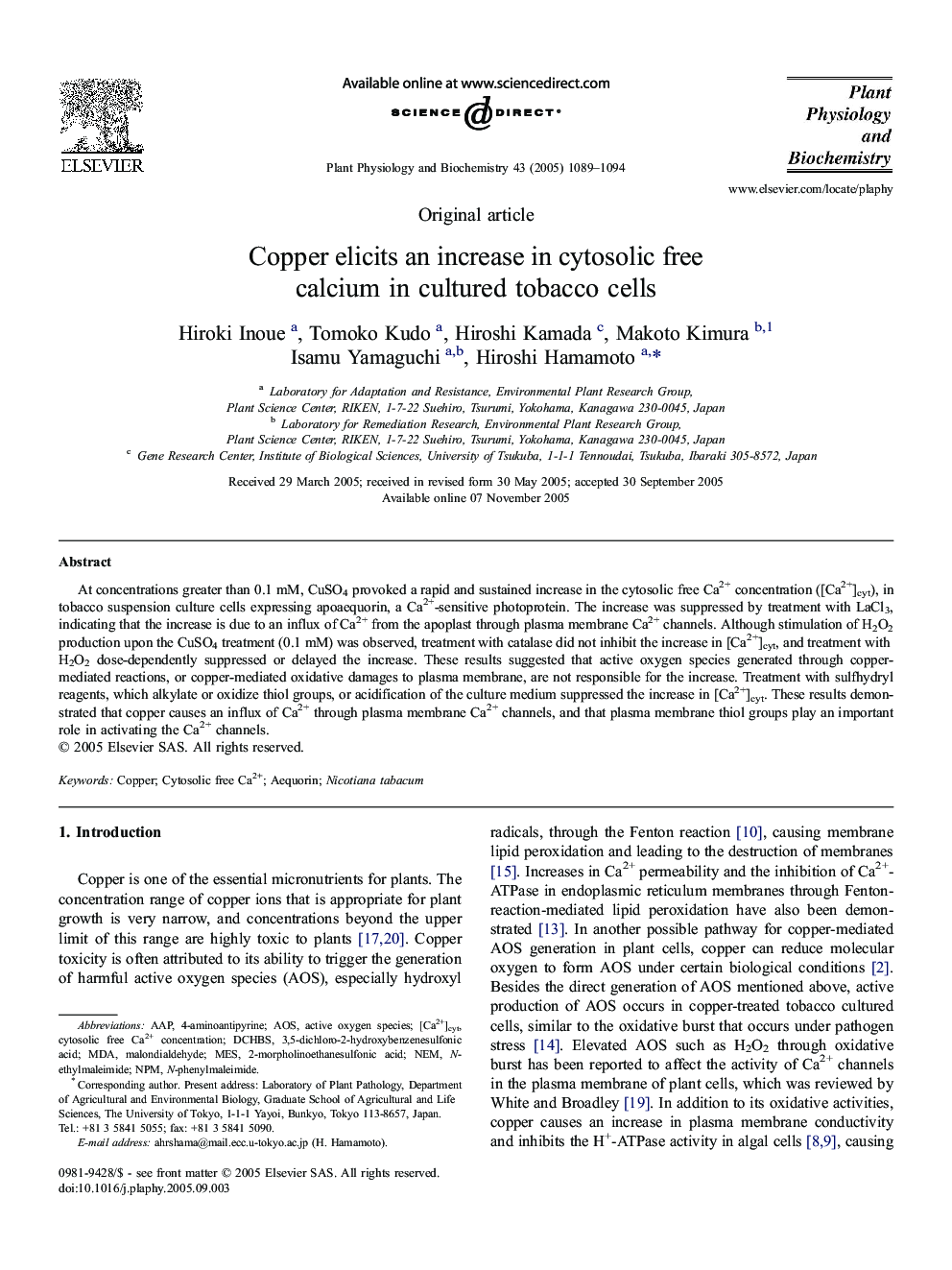| Article ID | Journal | Published Year | Pages | File Type |
|---|---|---|---|---|
| 10840559 | Plant Physiology and Biochemistry | 2005 | 6 Pages |
Abstract
At concentrations greater than 0.1Â mM, CuSO4 provoked a rapid and sustained increase in the cytosolic free Ca2+ concentration ([Ca2+]cyt), in tobacco suspension culture cells expressing apoaequorin, a Ca2+-sensitive photoprotein. The increase was suppressed by treatment with LaCl3, indicating that the increase is due to an influx of Ca2+ from the apoplast through plasma membrane Ca2+ channels. Although stimulation of H2O2 production upon the CuSO4 treatment (0.1Â mM) was observed, treatment with catalase did not inhibit the increase in [Ca2+]cyt, and treatment with H2O2 dose-dependently suppressed or delayed the increase. These results suggested that active oxygen species generated through copper-mediated reactions, or copper-mediated oxidative damages to plasma membrane, are not responsible for the increase. Treatment with sulfhydryl reagents, which alkylate or oxidize thiol groups, or acidification of the culture medium suppressed the increase in [Ca2+]cyt. These results demonstrated that copper causes an influx of Ca2+ through plasma membrane Ca2+ channels, and that plasma membrane thiol groups play an important role in activating the Ca2+ channels.
Keywords
Related Topics
Life Sciences
Agricultural and Biological Sciences
Plant Science
Authors
Hiroki Inoue, Tomoko Kudo, Hiroshi Kamada, Makoto Kimura, Isamu Yamaguchi, Hiroshi Hamamoto,
